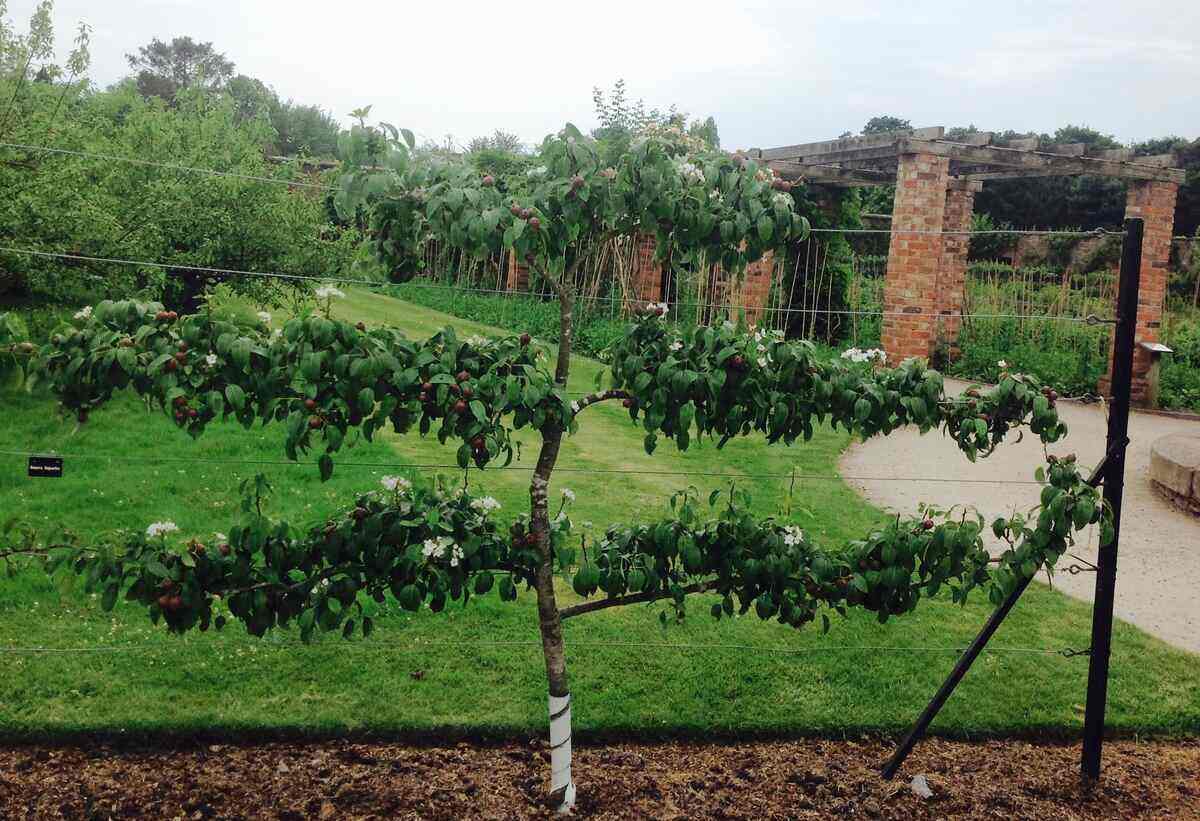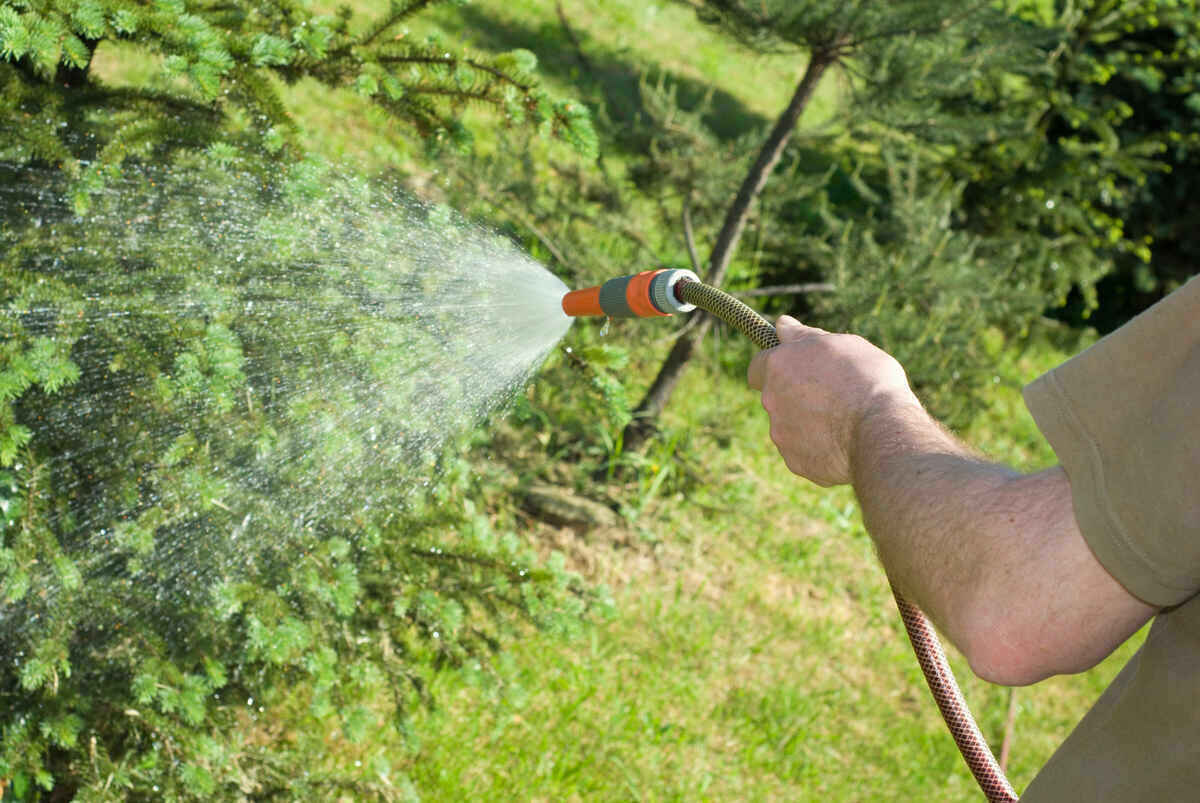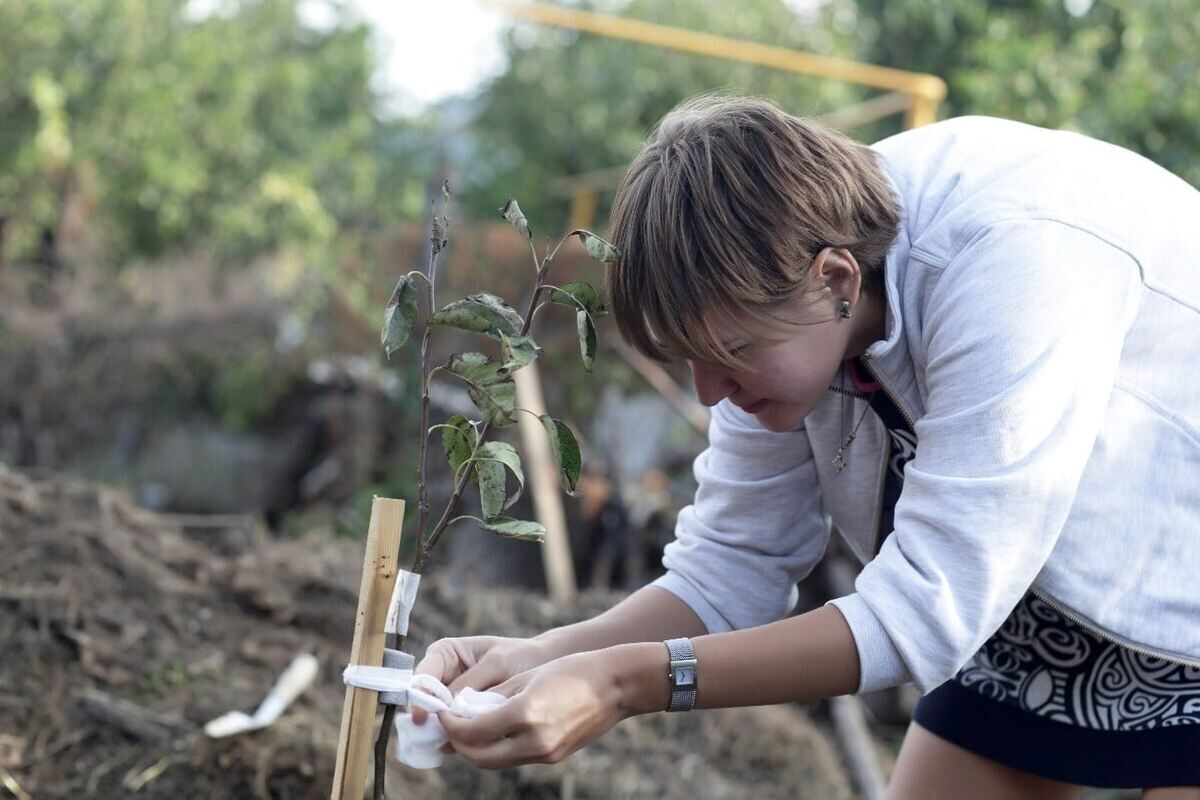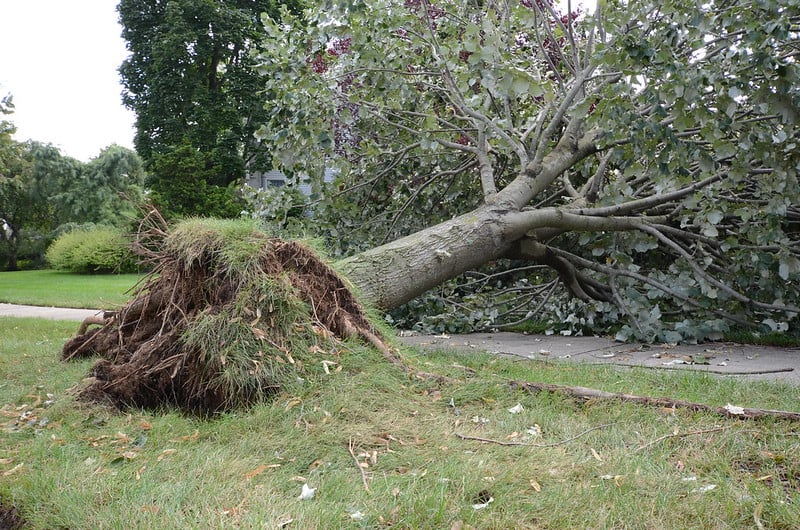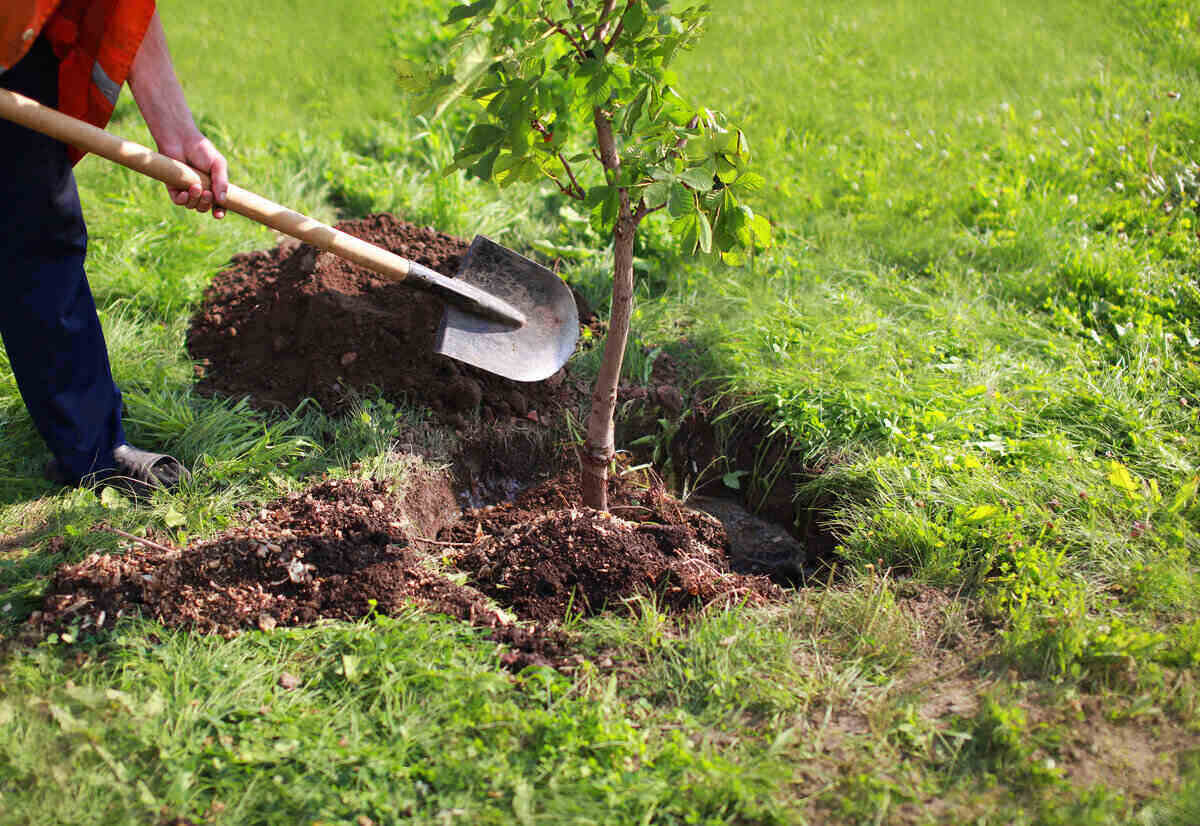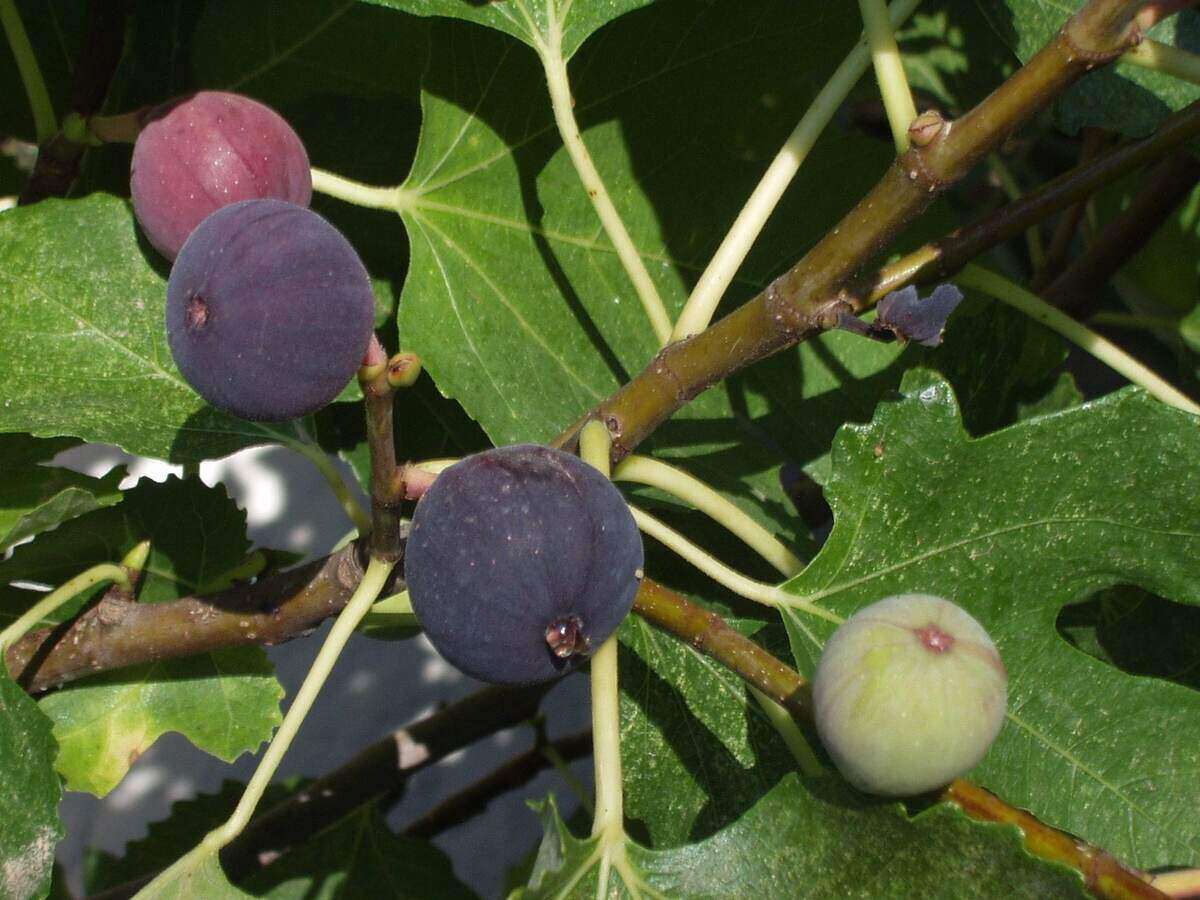
Ahhhh … the fabulous fig tree! Knowing how to care for and plant fig trees has always been a tantalizing topic among fruit lovers. There are a handful of reasons why these beauties were one of the first fruit trees cultivated in ancient times and why they still remain so popular with homeowners for both their fruits and as ornamental trees.
Besides being a biblical wardrobe choice, fig trees will thrive even if slightly neglected. They don’t mind poor soil conditions, they take up little space in your yard, and they can produce two crops of delicious fruit every year!
So, I’m going to go out on a limb and recommend that if you have extra space, your garden needs a fig tree in it! Actually, you don’t even need a garden, as long as you’ve got room to grow one in a pot. Now that I’ve piqued your curiosity, let’s talk about all things fig. We’ve got what you need to know to care for and plant fig trees.
Fig Tree Basics
The history of the fig tree is long and deeply rooted. Stemming back to biblical times, figs were one of the first foods consumed by people and one of the first foods cultivated. Native to Asia and the Mediterranean, fig trees were brought to North America by the Spanish settlers in the early 16th century.
In today’s culture, they are known for their showy, abundant fruit and large-leafed trees that create incredible shade canopies.
Common Names: Laurel, fig laurel, banyan, ficus.
Popular Varieties: The most popular fig varieties of the common fig, Ficus carica, include:
- Brown turkey
- Desert king
- Kadota
- Celeste (aka honey fig or sugar fig)
Height: Mature tree height varies greatly depending on the cultivar and its environment. Wild varieties grown in tropical settings attain lofty heights; the common varieties planted in North America span between 15 and 30 feet high.
Fruit Production: Many fig types produce two crops of fruit each year. The early season crop, also known as the breba crop, fruits on old wood from the previous season and is harvested in May or June. The main fig crop fruits on newly formed spring growth. Harvest follows in August.
Fig Tree Care
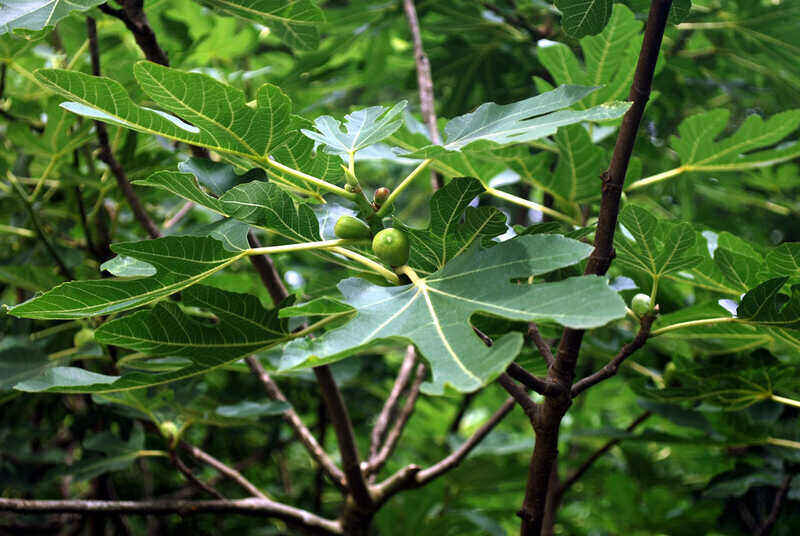
Fig trees are popular as fruiting crops because of their easy-going nature and their ability to thrive with minimal care. Even if they don’t mind being semi-neglected, the following basic tree care encourages better growth and higher fruit yields.
Sun Exposure
Fig trees need a sunny spot in your yard that classifies as receiving full sun to partial shade. Fruit trees need as much sun as they can possibly soak in to produce the greatest amount of fruit; a minimum of 7 to 8 hours of sun exposure is recommended.
With fig trees, less sun still means the tree does well, but your fruit yields will be reduced.
Climate
They thrive in areas with long, hot summers and mild winters which is why they are popular trees in the South and Western states. In colder climates, they can grow indoors or in a greenhouse as container plants.
Fig trees grow best in USDA Hardiness Zones 8-11. In colder climates with more severe winters, hardy cultivars can be grown outdoors if given proper protection. In climates below Zone 8, keep your figs in containers and bring them indoors during the winter.
Soil
Ficus carica loves well-draining soil regardless of its nutritional or organic matter content. Sandy soil is preferred over loams or clays, which may be why figs are popular in the southern and western U.S. where there is a lot of sandy soil.
If you have heavier soil or if it is compacted, it needs to be loosened up prior to planting. The best way to do this is to amend your yard with plenty of organic matter, such as finished compost or well-rotted manure, working it into a depth of 18 to 24 inches.
On the other hand, soil pH isn’t as important as drainage as long as the pH isn’t extremely low or overly high.
Water Requirements
Newly planted trees need to be watered frequently until their root systems are well established. Adding a layer of mulch around the base of the tree will help to retain soil moisture.
Once established, trees need less water. Aim to provide the tree with 1 inch of water weekly during the active growing season, whether through rain or scheduled irrigation.
Fertilizer
Fig trees are fairly low-maintenance, and will grow happily with little to no fertilizing. They’ll pull the nutrients they need from the soil and its organic matter.
If your tree needs a boost, you can feed it with a phosphorus- and potassium-rich fertilizer early in the growing season, following the directions on the product label. Avoid fertilizers high in nitrogen as this promotes lush, green foliage growth instead of fruit development.
Note: A biweekly application of seaweed extract can be beneficial throughout the active growing season if your tree looks a little paltry.
Pruning
One of the reasons fig trees are popular with homeowners is they need little pruning compared to other fruit trees. They typically maintain a neat and tidy appearance on their own with little intervention from you. Some carefully thought out annual pruning will keep your tree at a manageable size though, making it easier to harvest fruit.
When the tree goes dormant in the fall, prune out dead or diseased branches to increase the overall health of the tree. If your tree is overloaded with fruit during the growing season you can thin it to encourage fewer, albeit larger, tastier fruit the next season.
Overwintering
If you live in an area where temperatures drop to 10 degrees Fahrenheit or lower, be sure to plant one of the cold-hardy varieties of figs, such as Hardy Chicago, Celeste, or Brown Turkey. Even then, you will need to take steps to protect your tree from the cold winter temperatures:
- Bring container-grown trees inside during the winter months. Allow the tree to lose all of its leaves while still outside and then bring it inside to a cool, dry place. Many people opt for an attached garage or basement where temperatures are cooler, as you want the tree to go dormant.
- Move the tree back outside once temperatures consistently stay above 35 degrees at night in the spring.
- Simple insulation provides effective winter protection to figs in the ground. Build a cage around the trunk of the tree using chicken wire wrapped in burlap, then fill it with dried leaves or straw. Avoid wrapping the tree trunk in plastic as it may cause the tree to overheat on sunny days.
- When temperatures begin to climb in the spring, remove the cage and insulation, cleaning up around the tree thoroughly to minimize the risk of disease or insect problems.
Planting a Fig Tree
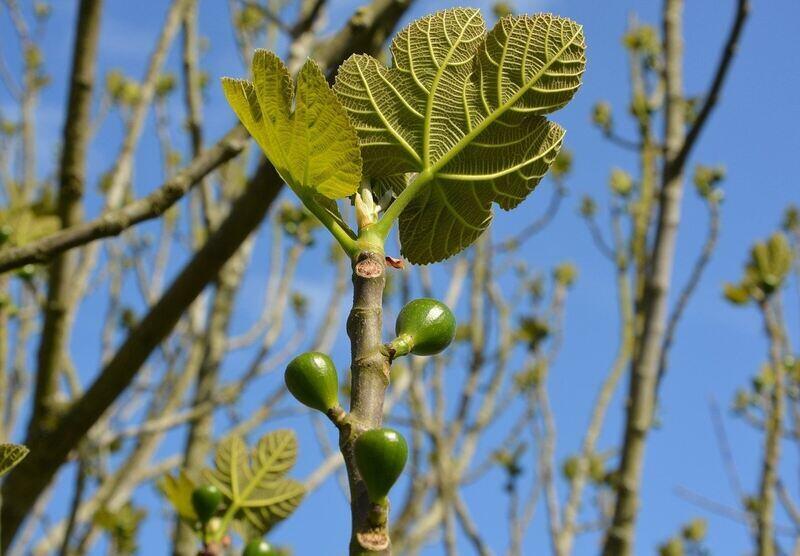
I know we’ve talked about the basics of planting fruit trees, but it’s good to hit on some key points.
Where
Decide first whether to plant it in the ground or put it in a container. There are pros and cons to both options, but much of the decision depends on the USDA hardiness zone you live in.
As I mentioned above, if you live in zones 8 to 11 it’s safe to plant your fig tree in the ground as long as you protect it in the winter. For zones that have colder winters, you should put it in a container and bring it indoors when it gets too cold.
When
Plant figs in late winter or early spring when trees are still dormant, once the frost has left the ground (if your ground freezes during the winter).
Avoid planting trees in the fall if possible as this doesn’t give the root system adequate time to start growing before the plant goes dormant for the winter or the ground freezes.
How
Obviously, the steps will differ for in-ground versus container planting. But if you just think of the container as the hole you’d dig in the ground, you can follow the basic planting instructions.
The two most important things when using a container are to choose a pot that is several inches wider and deeper than the root ball and use a high-quality potting mix that has good drainage.
How to Plant a Fig Tree in 7 Steps
- Using a sturdy digging shovel (I prefer one with a pointed center), dig a hole that is slightly bigger than the root system on your tree. Aim for a hole that is about two to three times as wide as the roots and only 2 to 3 inches deeper, regardless if you are planting bare-root or a container tree.
- Massage and spread the roots out, taking care not to break or damage them.
- Set the tree on the mound of loose dirt in the bottom of the hole (or container). You may set it so the soil level is a couple of inches deeper than it was planted in the original pot or keep it at the same level.
- Gently tamp the soil down with your foot as you fill the hole in, trying to remove all air pockets, without compacting the soil around the roots. Create a slight bowl or depression as you reach the top of the hole to allow water to settle naturally around the tree. Make sure you do not mound soil up around the trunk.
- If you plant bare-root trees, cut back the branches on the top of the tree to about one-half of their original length.
- Spread a couple of inches of mulch around the base of the tree, keeping it away from the bark on the trunk (about 3 inches away).
- Water your newly planted tree well. Go slowly; let the water absorb before adding more. The water helps settle the soil around the roots, getting rid of any air pockets that may have formed when you were filling the hole in.
Harvesting
Fig tree harvesting depends on the climate and the variety of fig tree. It also depends on when your fig tree produces fruit.
When do fig trees produce fruit? Fig trees planted in the ground may take three to four years after planting before they begin fruit production. This is because young trees utilize their resources to establish a strong, healthy root system before fruiting. Fig trees planted in containers are quicker to establish, and you can see fruit within three years of planting.
You can tell when a fig is ready to harvest based on its color. The fig fruit will change from green to light green, yellow, purple, or brown depending on the variety. Ripe figs will also hang downward rather than pointing straight out or upward. When the first fruit falls to the ground, you know it’s time to start harvesting figs.
Fig trees produce fruit twice a year. The breba crop is the first batch of fruit that comes from the old wood in late spring and early summer. Harvesting can be done from May through June (depending on where you live). The main batch of fruit is ready to harvest in late summer during August (area depending).
Note: Generally, the breba (or first) harvest of fig is not as appetizing as the second harvest.
Pests and Diseases
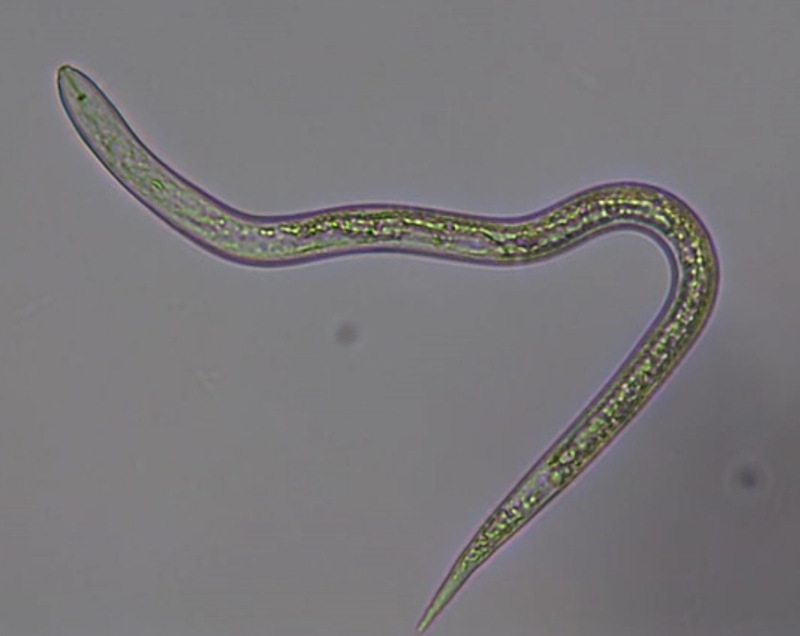
Photo Credit: Scot Nelson / Wikimedia Commons / CC0 1.0
Pests
As delicious and low-maintenance as fig trees are, they are not exempt from the various pests out there intent on damaging your trees. Outdoor fig trees have a few usual suspects that may require your attention:
- Root-knot nematode can be a real problem for fig trees, especially those grown in the South. Nematode larvae infect tree roots and inhibit the tree’s ability to absorb nutrients.
- Fig blister mites are another common pest you might encounter. These mites cause blisters on leaves which can lead to the leaves becoming a reddish-brown color and falling off.
- June beetles may not be at the top of your list of concerns, but they can still be damaging to your fig. These small beetles can cause holes and stains in the fruit.
Container-grown plants experience the same insect infestations as other indoor or greenhouse-grown plants:
- Aphids
- Whiteflies
- Spider mites
Diseases
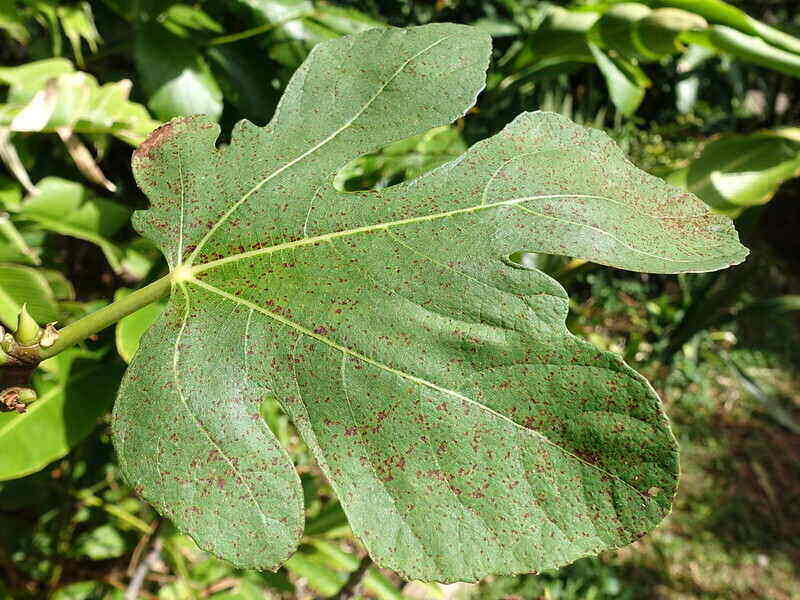
Photo Credit: Scot Nelson / Flickr / CC0 1.0
Fig trees grown outside, like all plants, are susceptible to many kinds of diseases. Most of the diseases found on fig trees stem from fungus and can cause yellow spots and spores on the leaves. There are many diseases out there, but here are a few to watch out for:
- Fig rust is a type of fungus that first appears as yellowish, small spots on the leaves. As time progresses, these spots enlarge and turn a reddish brown on the surface of the leaves.
- Alternaria rot (surface mold) is another disease commonly found in fig trees. This fungus causes olive-green or olive-yellow specks and sunken lesions on the fruit. The fruits may develop water-soaked areas where they touch other figs.
- Fig mosaic virus (FMV) can spread easily from fig tree to fig tree through fig mites or by grafting from infected trees. This virus causes discoloration, yellow spots, and mottling on the leaves. These spots can be spread across the leaf or can be individual spots.
Leaf drops and/or yellowing are signals to inspect the plant closely. It could be normal: Figs drop their leaves in reaction to winter. Abrupt environmental changes also upset them, so if you move the plant, get it used to its new environment slowly. Place it in its new home for just a few hours per day.
Leaf drops can also be a sign of pests or improper watering. Lack of water, or too much of it, may also cause yellowing.
Five Fig Facts

- The fig appears in the Bible early and often — first as a garment for Adam and Eve when they discover shame. Later, in the Gospel of Mark, when Jesus is hungry and comes across a fig tree with no fruit, he gives it a curse that is literally withering.
- There are more than 750 varieties of figs, and each has its own species of wasp that helps pollinate it. You probably eat bits of fig wasp when you bite into a ripe fig.
- One variety, the strangler fig, does as its name implies. They sprout in the branches of another tree, fall to the ground, and then slowly grow around their host tree, eventually killing it.
- In parts of India, people worship them as holy homes to gods and spirits. Cutting one down is taboo.
- Figs can contain a specific type of mite, and the mite can cause an allergic reaction. So those who handle figs frequently can suffer from a condition called “grocer’s itch.”
FAQs: Common Fig Tree Questions and Concerns
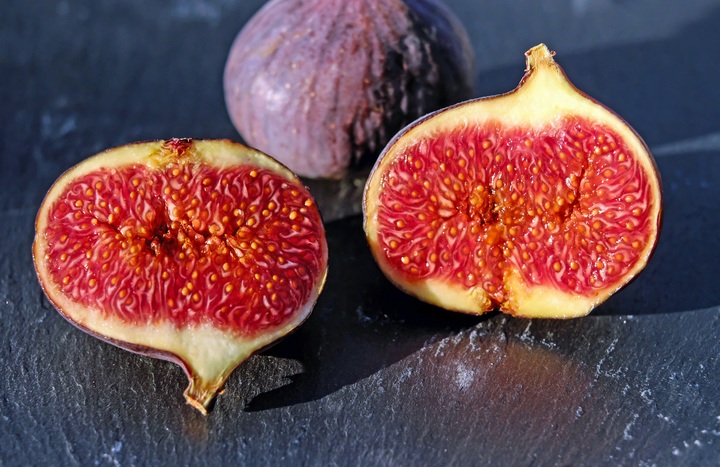
Yes, fig trees do best when they get full sun to partial shade. These trees need at least eight hours of sunlight per day. Sunlight intake helps to ripen the fruit and can help prevent diseases by drying out the soil.
Fig trees are self-fruiting or parthenocarpic, meaning you can successfully grow a single tree. They will produce fruit without pollination or fertilization.
Unfortunately, no. Figs will stop ripening once you pick the fruit. This makes it critical that you time harvest when your fresh figs have ripened. It also means that you need to watch carefully and prevent scavenging squirrels or deer from stealing the fruit.
An espaliered fruit tree is a great option for figs, especially if you are working with limited space. Growing a fig tree in an espaliered manner against a wall is also beneficial in areas with colder climates. The sunlight radiates from the brick/stone behind the tree to create a warmer microclimate.
Additional Sources: PlantVillage
When to Call the Fig Experts
Figuring out your fig can take more work than you initially thought. Planting the tree, understanding its requirements, and battling various pests and diseases might require more than one set of hands. For further help with your fig tree, call a local tree care pro near you. Let the professionals deal with heavy lifting while you reap the rewards.
Main Image Credit: Simon / Pixabay
